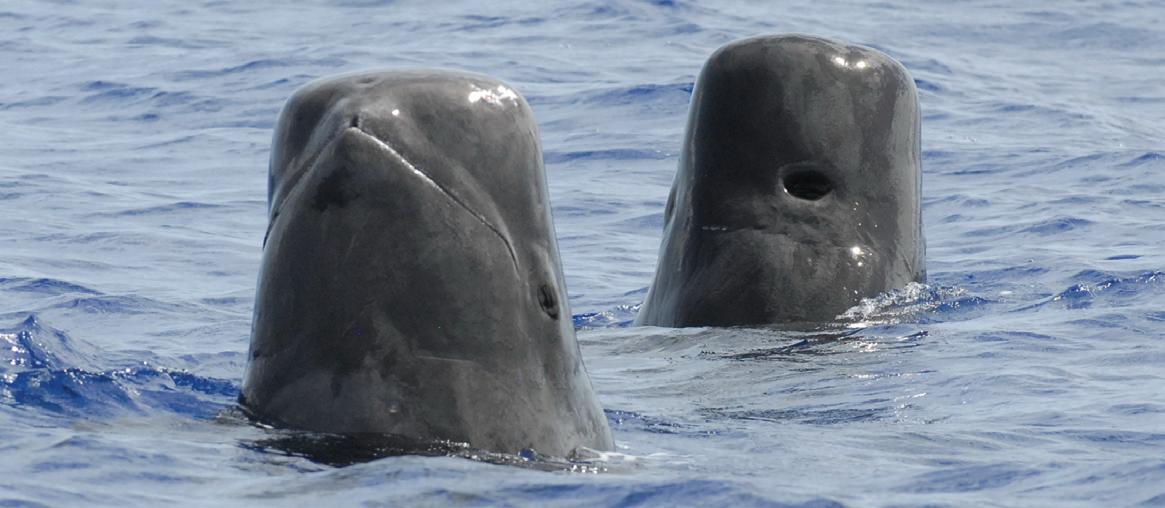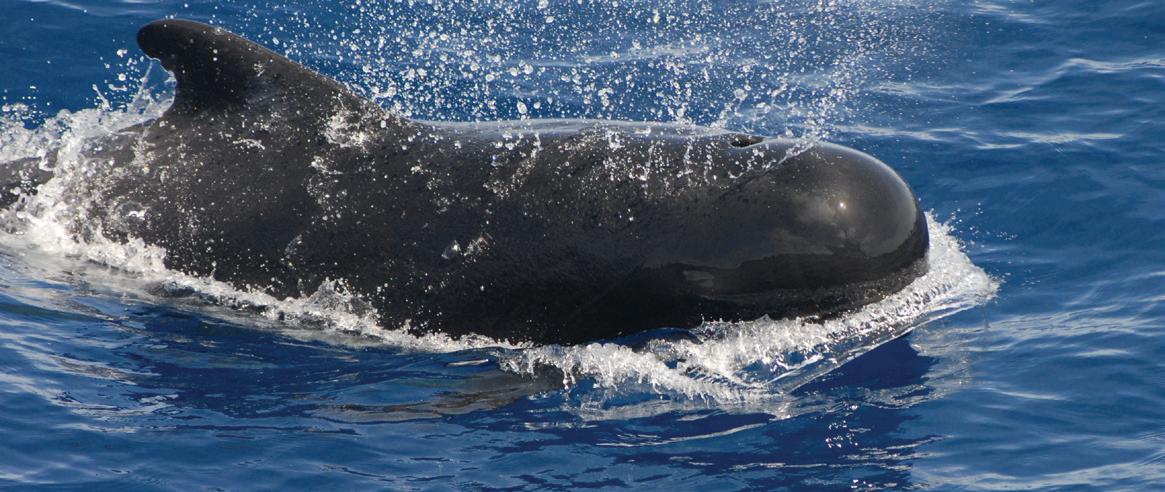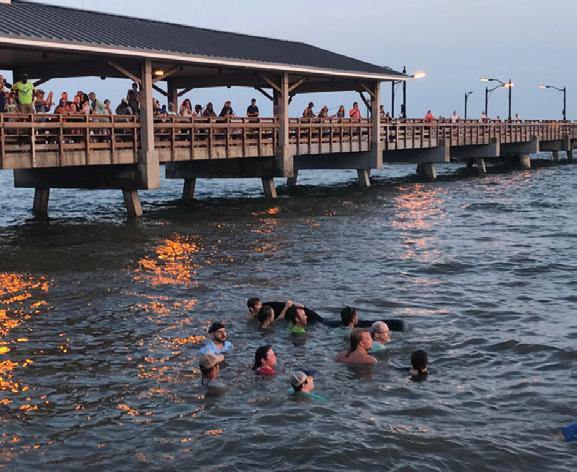
3 minute read
Pilot Whale Stranding on SSI
Crews consisting of Georgia DNR, Georgia Sea Turtle Center, and volunteers work to guide a whale to an area shallow enough to be assessed. Photo provided by GA DNR
Scores of beachgoers, lifeguards, local officials and DNR staff will not soon forget July 16.
Advertisement
Thanks to their work and a rising tide, a mass stranding of shortfinned pilot whales that began about 6 p.m. on St. Simons Island’s East Beach ended with most of the pod of some 50 whales swimming back to sea. At least 20 stranded, only three died.
Senior wildlife biologist Clay George, who coordinates DNR’s work with marine mammals, helped lead the response that long, chaotic evening.
Glynn County beach manager Shawn Lentini said lifeguards first spotted the pod just after 5 p.m. near Gould’s Inlet, at the north end of East Beach. They thought the whales were heading out to sea.
But less than 45 minutes later, the lifeguards noticed people gathered in the surf just south of the Coast Guard Station. The whales were swimming into shore. Lentini phoned DNR game warden 1st Class Jay Bright, a longtime friend.
Bright’s advice: Try to keep the whales in the water, but watch their tails, be careful and don’t let people put themselves in danger.
Lifeguards and beachgoers began trying to push stranded whales – massive animals weighing more than a ton – into deeper water and keep others from the shallows, with Lentini keeping an eye on the group’s safety. The incoming tide was key, he said. “Had it been low tide, I don’t think we would have been able to save any.”
DNR staff arrived within minutes and began managing the rescue effort. The watching crowd grew to hundreds, the media followed, and soon news of the stranding circulated worldwide.
Yet what was a headline for most is vivid memory for Lentini. “It’s something I never expected to experience,” he said.
Of the three adult males that died, initial necropsy findings revealed no obvious signs of human interaction that might have caused or contributed to their stranding. Some mild signs of disease were noted, but such findings are common in wild, adult animals. Further analysis is pending.
At least 47 whales were photographed swimming from St. Simons toward deeper water the following day on July 17. The group was monitored through early that afternoon by the National Marine Mammal Foundation, a partner with DNR in dolphin research. DNR also checked area beaches, marshes and waterways by helicopter, but no other stranded animals were found.
On July 21, a pod of pilot whales was seen offshore of Florida, 140 miles away. A video by a charter angler showed a dorsal fin that looked similar to the fin of one of the St. Simons whales, but that identification is uncertain.
The last known mass stranding of pilot whales in Georgia was in February 1977, when 15 stranded and died on Cumberland Island near the Florida line, according to a search of records by DNR and The Brunswick News. They were part of a larger mass stranding that left more than 150 whales dead from Mayport, Fla., to Rockville, S.C. In May 1962, 17 pilot whales stranded and died at the southern tip of St. Simons. The causes of the 1962 and 1977 strandings was not determined. Among cetaceans – the order of marine mammals including whales, dolphins and porpoises – pilot whales are the most common species known to strand in mass numbers.
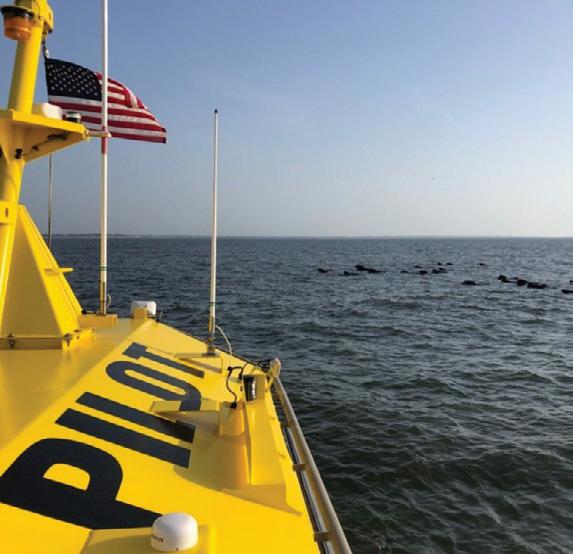
Pilot boat spots whale pod off St. Simons Island, heading back to sea Photo by Brunswick Pilots Association
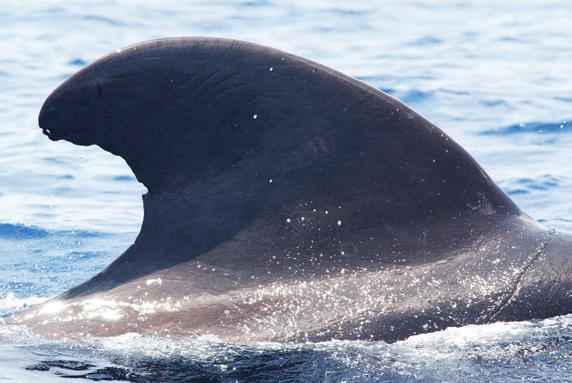
▶ Dolphins — as are killer whales, the only dolphin larger than pilot whales. ▶ Either short- or long-finned. Both species are found globally in tropical and temperate oceans. Along the southeastern Atlantic, they live off the edge of the continental shelf, or some 100 miles off Georgia’s shores. ▶ Characterized by rounded heads and strongly curved dorsal fins. ▶ Very social and usually found in groups, or pods. ▶ About 2,200-6,600 pounds and 12-25 feet long.
Pilot whales can be identified by their strongly curved dorsal fin. Photo by Wayne Hoggard, NOAA, NMFS, SEFSC
For more information about pilot whales visit: bit.ly/pilot_whales
Below: These pilot whales, photographed in the waters off Guam are "spy-hopping." Photo by Adam U, NOAA Bottom: Pilot whales are found all over the world in tropical waters. Photo by Adam Li, NOAA
